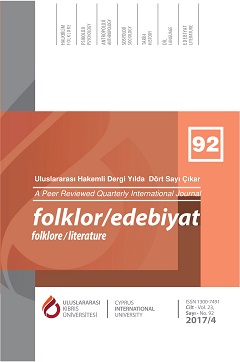Rus Edebiyatinda İmgecilik
Imaginism in Russian Literature
Author(s): Sevgi IlicaSubject(s): Poetry, Metaphysics, Russian Literature, Hermeneutics, Theory of Literature
Published by: Uluslararası Kıbrıs Üniversitesi
Keywords: Russian imaginism; image; Russian literature of the first quarter of the 20th century; avant-garde poetry;
Summary/Abstract: In Russian literature “Imaginism” came about after the Russian Revolution of 1917 in Moscow. The leading poets of this movement were Vadim Gabrielevich Shershenevich, Anatoly Borisevich Mariengof, Sergei Alexandrovich Yesenin and Ryurik İvnev. In January 1919 the Russian imaginist poets signed and issued a manifesto, Deklaratsiya, which had been written primarily by Shershenevich. In 1922 they published the imaginist poetry magazine Gostinitsa dlya puteshestvuyuschih v prekrasnom. Imaginism in Russia flourished between 1919 and 1922. In the imaginist program the image is counted as the most crucial component of poetry. Imaginism that is a modern and avant-garde literary flow simply focuses on images. Adopting a political point of view, the imaginist poets support the function of the poetic image rather than content. The essential principle of Russian imaginism is to shock the readers by using genuine and uncommon images as much as possible. Using strong language, the imaginists rejected all the literary movements existing before theirs. In this article, the development process and the basic characteristics of Russian imaginism will be discussed and some widely known poems written by imaginist poets will be analyzed.
Journal: Folklor/Edebiyat
- Issue Year: 23/2017
- Issue No: 92
- Page Range: 181-194
- Page Count: 14
- Language: Turkish

